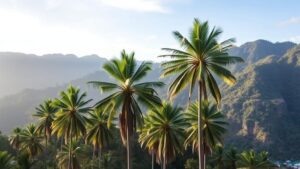Searching for hidden mountain cities in Bhutan tied to early Buddhist kingdoms.
Searching for Hidden Mountain Cities in Bhutan Tied to Early Buddhist Kingdoms
Bhutan, a small yet enchanting kingdom nestled in the Eastern Himalayas, holds countless secrets within its rugged terrain. Among these are the hidden mountain cities that echo the poignant history of early Buddhist kingdoms. These cities, often enveloped by mist and towering peaks, offer a captivating glimpse into a past where spirituality and kingdom dynamics were intertwined. This article explores the historical significance, examples, and current explorations of these hidden wonders.
The Historical Context of Bhutans Buddhist Kingdoms
The intricate history of Bhutan is closely linked to the spread of Buddhism, particularly during the 7th century when it began to take root in the region. Early Buddhist kingdoms, such as those led by King Songtsen Gampo, were pivotal in shaping Bhutans spiritual landscape. Gampo, known for unifying Tibet and Bhutan, established numerous monasteries, many of which were built in the mountains.
Also, the 8th century saw the arrival of Padmasambhava, or Guru Rinpoche, who further solidified Buddhisms foothold by establishing key sacred sites. e events laid the foundation for the development of what would eventually be Bhutans unique interpretation of Buddhism, reflected in its architecture, culture, and the legendary hidden cities.
Notable Hidden Cities and Sites
Several sites within Bhutans mountainous terrain are believed to be the remnants of these early Buddhist kingdoms. The notable hidden cities include:
- Gangteng Monastery: Situated in the Phobjikha Valley, it dates back to the 17th century and serves as a key cultural hub for the Nyingma school of Buddhism. The monastery is a significant part of Bhutan’s highland culture and hosts the yearly Black-Necked Crane Festival.
- Jakar Dzong: Also known as the Castle of the White Bird, this fortress in Bumthang was built in 1667 and is closely linked to the early Buddhist kings. It is surrounded by the old remnants of Bhutan’s royal lineage.
- Taktsang Monastery: Commonly referred to as Tigers Nest, this iconic cliffside monastery is a 17th-century structure that attracts pilgrims and trekkers alike. Guru Rinpoche is said to have meditated here, marking it as a significant historical site.
Modern Exploration and Preservation Efforts
In recent years, the exploration and study of these hidden cities have garnered increased attention. Scholars and archaeologists have undertaken expeditions to unveil Bhutans historical treasures. For example, the Bhutanese government, in partnership with various NGOs, has initiated programs aimed at preserving these sites while promoting eco-tourism.
Current initiatives focus on:
- Archaeological Surveys: Teams are documenting architectural styles and artifacts to understand better the socio-religious dynamics of the period.
- Sustainable Tourism: Efforts to balance preservation with tourism allow travelers to engage with Bhutan’s rich history without causing harm to its delicate ecosystems.
The Challenges Ahead
Despite the growing interest in Bhutans hidden cities, several challenges persist. The remote locations of these cities often hinder archaeological efforts. Plus, climate change poses a serious threat to the preservation of these historical sites, highlighting the need for immediate action.
Local communities, the custodians of Bhutans heritage, face a crucial role. r involvement in conservation initiatives is vital to ensure that the stories and traditions tied to these hidden cities continue to thrive.
Conclusion and Actionable Takeaways
Bhutans hidden mountain cities represent a rich tapestry of history, spirituality, and cultural resilience. As explorers, historians, and travelers continue to uncover the stories tied to these ancient sites, the importance of preservation and sustainable tourism comes to the forefront. Engaging with local communities, supporting preservation initiatives, and promoting awareness surrounding Bhutans heritage are actions everyone can take to contribute positively to this remarkable kingdom.
In summary, by seeking and protecting the hidden mountain cities of Bhutan, we not only preserve a vital part of human history but also ensure that the legacy of early Buddhist kingdoms continues to inspire future generations.


